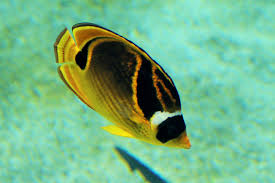
The Blue Willow pattern, widely recognized for its intricate designs and distinctive blue-and-white porcelain, has captivated collectors and admirers for centuries. One of the most iconic elements of this pattern is the depiction of birds. These birds, often seen flying over bridges, near willow trees, or perched on the edges of pagodas, are not mere decorative elements. They hold deep symbolic meanings and contribute to the overall narrative of the Blue Willow story.
This article delves into the bird motif in the Blue Willow pattern, exploring the symbolism behind these birds, their significance in the legend, and how they contribute to the emotional and cultural impact of the design. We will also examine how the bird motif has been interpreted across different cultures and time periods.
The Blue Willow Pattern: An Overview
Before exploring the bird motif, it’s essential to understand the Blue Willow pattern’s origin and overall design. The Blue Willow pattern is a classic porcelain design, characterized by intricate blue-and-white imagery. It features several key elements, including pagodas, bridges, trees (particularly willows), and a pair of lovers. Over time, the pattern has been adapted and reinterpreted across various cultures, but it has always maintained its central themes of love, loss, and eternity.
The pattern is most commonly seen on fine china, teacups, plates, and other porcelain objects, and it has been produced for centuries, with its origins tracing back to the 18th century in England. The Blue Willow design was inspired by Chinese aesthetics, which were incredibly popular in Europe at the time. Despite its Chinese influence, the Blue Willow legend is a Western invention, and many of the motifs in the design have symbolic meanings that reflect European values and beliefs.
Among these motifs, the birds stand out as one of the most significant, often appearing as symbols of freedom, love, and the eternal bond between the two lovers in the story.
The Birds in the Blue Willow Pattern: A Symbol of Love
In the Blue Willow legend, the birds represent the eternal love between Koong-se and Chang, the two central characters of the story. The birds are often depicted as flying together in the sky, symbolizing the couple’s souls being united forever. This symbolism is powerful, as it suggests that even in death, love transcends physical boundaries.
The depiction of birds as a motif of eternal love is not unique to the Blue Willow pattern. Birds, in many cultures and traditions, have been used as symbols of love and fidelity. In the case of Blue Willow, the birds flying together represent the union of two lovers who, despite being separated by societal pressures, are reunited in the afterlife. The birds’ flight across the design acts as a reminder that love, once true, will endure through time and even death.
In the pattern, the birds are often shown in pairs, reinforcing the theme of duality — of two hearts joined together. The couple’s tragic fate in the story mirrors the idea that no matter the challenges or obstacles lovers may face, their bond will continue, symbolized by the birds soaring together in the sky.
The Birds as Symbols of Freedom
Another layer of symbolism that the birds in Blue Willow represent is freedom. In the legend, Koong-se and Chang defy the expectations of their families and society in their pursuit of love. They escape the constraints of their social roles and are ultimately punished for it. The birds, flying freely above the pagodas and trees, embody the idea of freedom from the societal restrictions that bind the lovers.
This idea of freedom is significant within the context of the Blue Willow story because it emphasizes the lovers’ desire to break free from tradition and live life on their own terms. In many cultures, birds are symbols of liberation — they are able to fly above earthly matters and experience a sense of release. In the case of Blue Willow, the birds’ freedom can be seen as a parallel to the lovers’ wish to escape from the constraints of family and social duty.
The birds flying high above the earth also act as a contrast to the more grounded elements in the design, such as the willow tree, which is often associated with sorrow and weeping. The juxtaposition between the freedom of the birds and the grounded nature of the other elements serves to highlight the themes of longing and unfulfilled desires in the Blue Willow pattern.
The Birds in Blue Willow and Cultural Interpretations
While the symbolism of birds in the Blue Willow pattern is rooted in Western interpretations of love and freedom, the motif also draws from Eastern cultural symbolism. In Chinese culture, birds are often seen as symbols of good luck, happiness, and harmony. In this sense, the birds in the Blue Willow design can be interpreted as auspicious symbols, signaling the potential for good fortune and peaceful relationships.
Additionally, in Chinese art and folklore, birds are often associated with the afterlife and spiritual realms. In this context, the birds in the Blue Willow pattern can be seen as representing the connection between the physical world and the spiritual world. This connection emphasizes the theme of eternal love, as the lovers are symbolized by the birds that transcend life and death.
In both Chinese and Western traditions, birds have also been linked to the idea of communication between the heavens and the earth. They are often seen as messengers between the mortal realm and the divine, acting as intermediaries that bridge the gap between human desires and the divine forces at work. In Blue Willow, the birds’ flight across the design could symbolize the communication between the earthly realm and the afterlife, reinforcing the theme of eternal love and the transcendence of death.
The Role of Birds in the Blue Willow Legend
The birds in the Blue Willow design also play a critical role in the legend itself. In the most widely told version of the story, Koong-se and Chang are the lovers whose relationship is forbidden by her father. After being caught while attempting to escape, they are punished and executed. However, their love is so strong that their spirits are transformed into doves, symbolizing their eternal bond.
The transformation of the lovers into birds is a powerful moment in the story, as it signifies the triumph of love over death and adversity. The doves, flying together in the sky, suggest that true love cannot be destroyed, even by societal pressures, family obligations, or the finality of death. This transformation also emphasizes the theme of reincarnation, where the lovers’ souls continue to exist in a new form, forever united.
In this context, the birds’ role in the design is not just decorative but narratively essential. Their flight across the Blue Willow pattern mirrors the progression of the story, from the lovers’ tragic separation to their eventual reunification in the afterlife. The birds serve as the final symbol of their undying love, bringing the story full circle.
Birds as Decorative Motifs in Modern Blue Willow Designs
In contemporary interpretations of the Blue Willow design, the bird motif has continued to evolve, often taking on more stylized and abstract forms. Artists and designers have reimagined the birds in the Blue Willow pattern to reflect modern tastes while retaining the core symbolic meanings of love and freedom.
In modern takes on Blue Willow, birds might appear in more dynamic or whimsical poses, flying not just over the traditional elements like the pagoda and willow tree but also interacting with other motifs or featured more prominently as focal points of the design. These modern interpretations allow the Blue Willow pattern to remain relevant and adaptable to contemporary trends while preserving its deep symbolic roots.
As Blue Willow china has become a popular motif in interior design, fashion, and art, the bird symbol has been embraced in a variety of new contexts. For example, the birds might appear on decorative pillows, wall art, or jewelry, where their symbolic meanings of love and freedom resonate with modern audiences. In fashion, the bird motif can be found on clothing items such as scarves or dresses, where it continues to symbolize the same themes of eternal love and liberation.
Conclusion: The Enduring Symbolism of Birds in Blue Willow
The bird motif in the Blue Willow pattern is more than just a decorative feature — it is a deeply symbolic element that contributes to the emotional depth and cultural significance of the design. Whether representing the eternal love of the story’s central characters, the freedom to escape societal constraints, or the spiritual connection between the physical and divine realms, the birds in Blue Willow hold rich and layered meanings.
Throughout history, the bird motif has evolved and been reinterpreted across cultures, yet it has consistently maintained its association with love, sacrifice, and transcendence. The symbolism of the birds flying together across the design serves as a powerful reminder of the enduring power of love and the belief that, even in the face of death, true love can never be extinguished.
As the Blue Willow pattern continues to inspire new generations of collectors, designers, and storytellers, the bird motif remains a central and beloved element of the design. Its symbolism continues to resonate, reminding us of the timeless connection between love, freedom, and the eternal bond shared between two souls.










